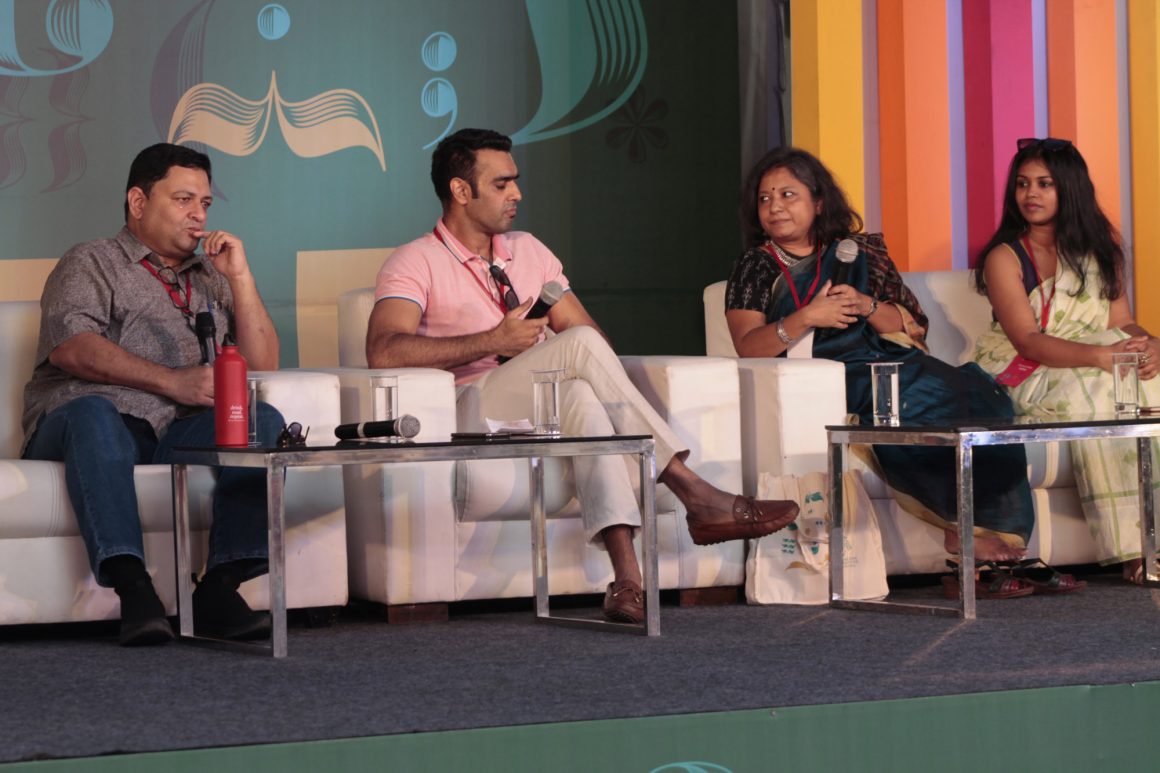The recent events around the death of a young actor have brought to the limelight the stigma around mental health. It is important to start conversations around this to understand each other’s well-being. It is also imperative to acknowledge how society’s own rigid ideas around class, caste, gender and success can mar an individual’s mental state. To begin a conversation, we should also work toward creating equal spaces for everyone.
June is Pride Month and mental health issues around the LGBTQIA+ community must also be heard and voiced. Talking of Muskaan is an insightful YA novel that explores the issue of bullying and homosexuality in high school. In doing so, it also speaks about class, an entitlement that comes with class, the need for better support systems for students to understand and gauge their identities.
The novel begins with Muskaan’s best friends Aaliya, Rashika, Srinjini, Divya and Subhojoy being summoned by their school Principal. They are informed that Muskaan had attempted suicide and was hospitalized. The Principal tries to understand through them, about what could have been troubling Muskaan.
The story then reels back to five months earlier to flesh out the characters of Aaliya, Subhojoy and Prateek, along with unfolding the events that led to Muskaan’s suicide attempt. The rest of the novel is only seen through these three characters. The reader does not hear Muskaan’s viewpoint. The reader only hears about Muskaan and her thoughts through these characters. Aaliya and Muskaan are good friends. Prateek is a rich kid with a rich father who liked Muskaan but she rejected him. Prateek later gets put off by her quiet nature.
Subhojoy is on the opposite end of the class spectrum. He lives in a congested place and knows that studying hard is the only way to make his dreams come true. He wants to come out first in his studies but somehow Muskaan beats him to it by a few marks. They then become friends hoping to learn from each other. This also helps them to know each other’s circumstances better: Muskaan not being attracted to the opposite gender or Subhojoy feeling out of place because of his class.
Muskaan is mocked at for being friends with Subhojoy simply because he does not come from a well to do family. She is ridiculed for having rejected Prateek, who is wealthy and considered cool in the school. Word slowly gets around about possible rumours about her sexuality.
As we know, teenagers and kids can be vicious to each other when they do not conform. Being in love only equals to heterosexuality is the only thing peddled as being normal, which instantly makes everyone label Muskaan a ‘weirdo’ for liking girls instead of boys.
School can be tough and a hell-hole for those who are misfits, who do not seem to follow the normal.
Talking of Muskaan is a sensitive story that showcases the pitfalls of majority thinking where only one kind of behaviour is deemed correct. The novel also portrays how school children themselves are directly and indirectly taught gender and sexuality norms whether it is through the depiction of the girls shaving their body hair and making a ritual out of that or Prateek’s very Bollywood like thinking that a girl’s ‘no’ can be turned into a ‘yes.’
Through the juxtaposition of Subhojoy and Prateek, Sankar has also shown ideas of privilege prevalent in India. Subhojoy believes in the middle-class dream of working hard to become successful, whereas Prateek uses his wealth as a means to success which he thinks is his birthright.
Though Talking of Muskaan is a YA novel, it is one to be read by both parents and teenagers. Parents can reflect on how their own prejudices and attitudes can creep into a child’s point of view. For example, Prateek’s father’s entitled views seep into Prateek in the novel. It is an excellent way for parents to learn to be sensitive to the workings of a child’s mind. Lastly, the novel paves the way for sensitizing adults and children towards issues of homosexuality and its decriminalization in India. It is only when we engage in conversations, can we hope to create equal spaces where people are not burdened by the thought of being ostracized for who they like and are not mocked or bullied so much so that they contemplate or even attempt suicide.
Here is a list of other books you can read this Pride Month
Here is another YA book recommendation for you.



